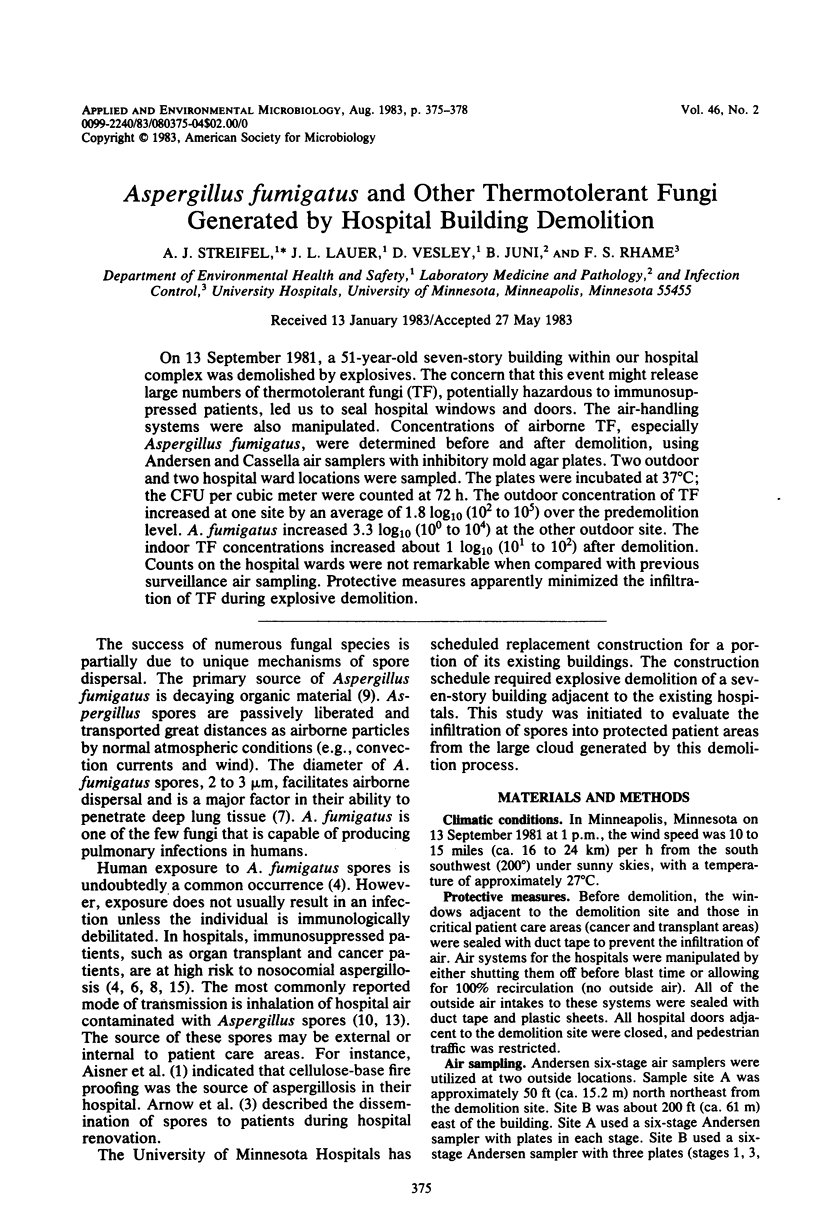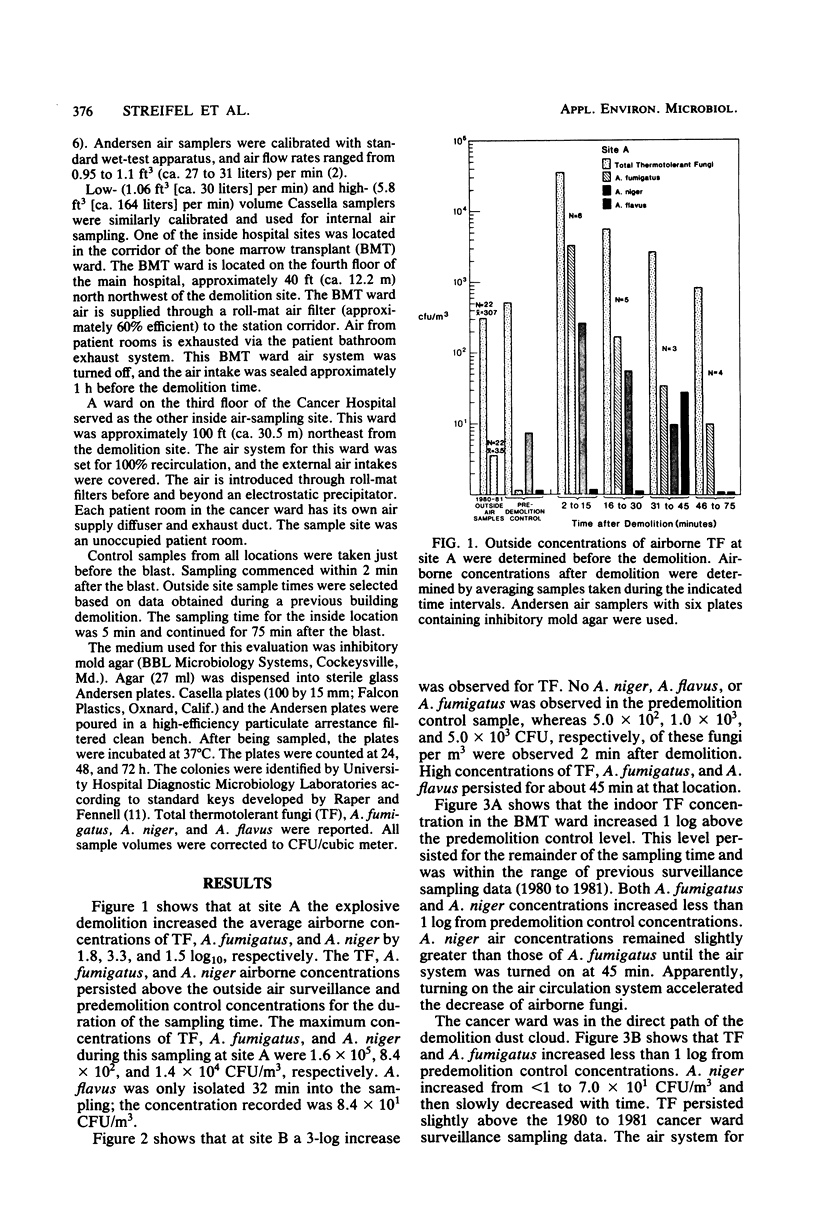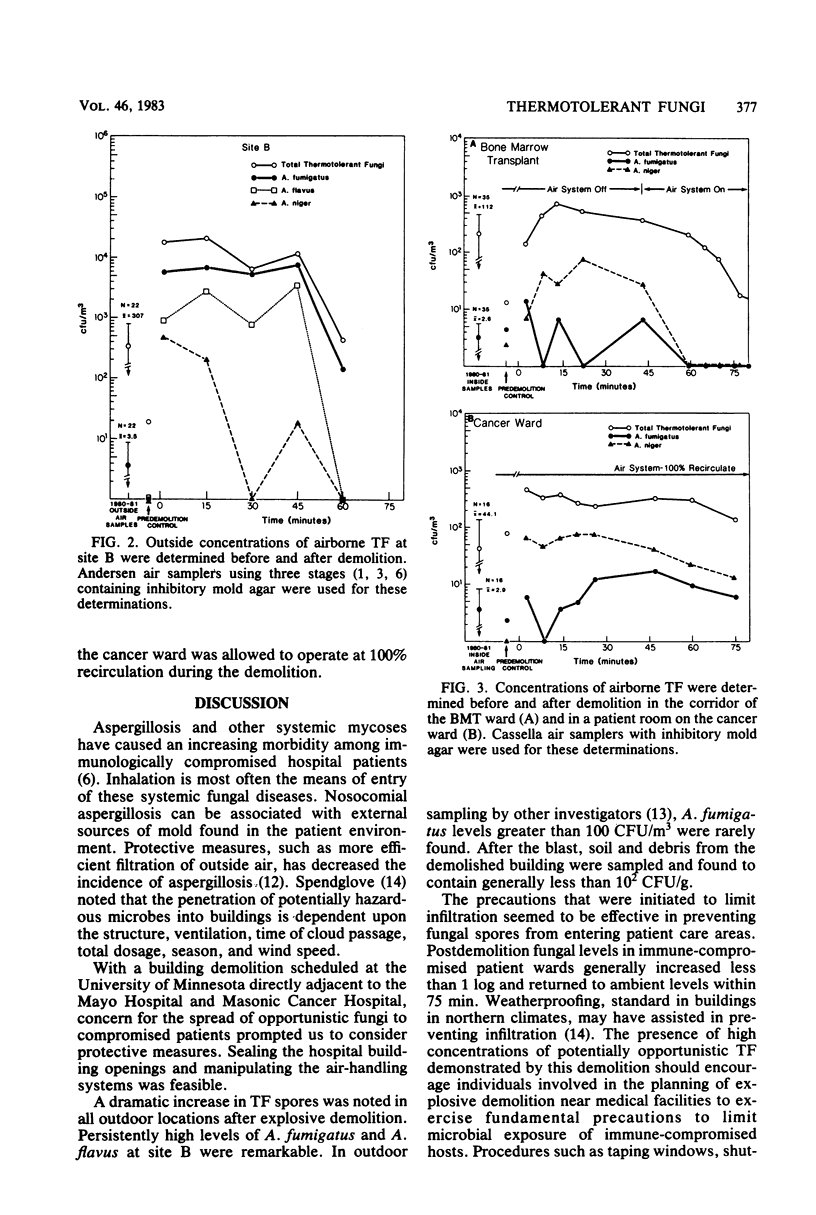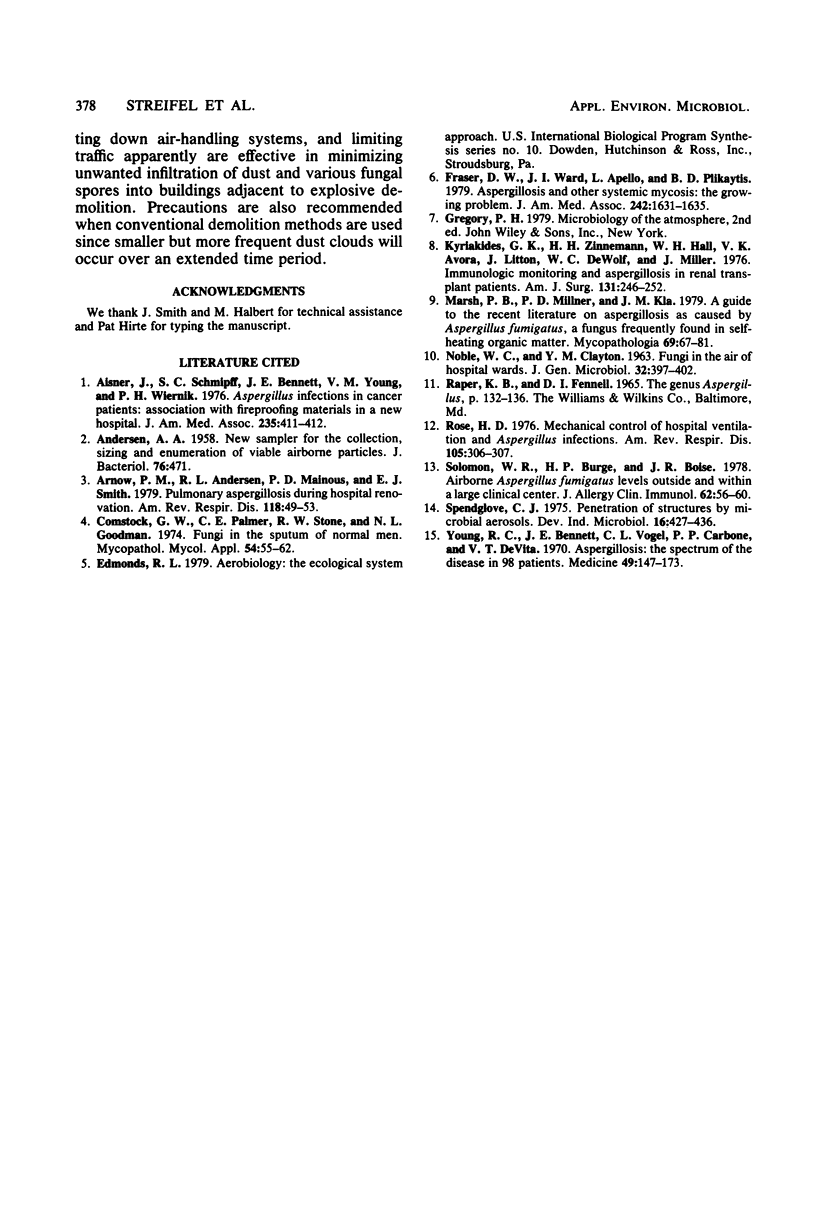Abstract
On 13 September 1981, a 51-year-old seven-story building within our hospital complex was demolished by explosives. The concern that this event might release large numbers of thermotolerant fungi (TF), potentially hazardous to immunosuppressed patients, led us to seal hospital windows and doors. The air-handling systems were also manipulated. Concentrations of airborne TF, especially Aspergillus fumigatus, were determined before and after demolition, using Andersen and Cassella air samplers with inhibitory mold agar plates. Two outdoor and two hospital ward locations were sampled. The plates were incubated at 37 degrees C; the CFU per cubic meter were counted at 72 h. The outdoor concentration of TF increased at one site by an average of 1.8 log10 (10(2) to 10(5] over the predemolition level. A. fumigatus increased 3.3 log10 (10(0) to 10(4] at the other outdoor site. The indoor TF concentrations increased about 1 log10 (10(1) to 10(2] after demolition. Counts on the hospital wards were not remarkable when compared with previous surveillance air sampling. Protective measures apparently minimized the infiltration of TF during explosive demolition.
Full text
PDF



Selected References
These references are in PubMed. This may not be the complete list of references from this article.
- ANDERSEN A. A. New sampler for the collection, sizing, and enumeration of viable airborne particles. J Bacteriol. 1958 Nov;76(5):471–484. doi: 10.1128/jb.76.5.471-484.1958. [DOI] [PMC free article] [PubMed] [Google Scholar]
- Aisner J., Schimpff S. C., Bennett J. E., Young V. M., Wiernik P. H. Aspergillus infections in cancer patients. Association with fireproofing materials in a new hospital. JAMA. 1976 Jan 26;235(4):411–412. [PubMed] [Google Scholar]
- Arnow P. M., Andersen R. L., Mainous P. D., Smith E. J. Pumonary aspergillosis during hospital renovation. Am Rev Respir Dis. 1978 Jul;118(1):49–53. doi: 10.1164/arrd.1978.118.1.49. [DOI] [PubMed] [Google Scholar]
- Comstock G. W., Palmer C. E., Stone R. W., Goodman N. L. Fungi in the sputum of normal men. Mycopathol Mycol Appl. 1974 Oct 15;54(1):55–62. doi: 10.1007/BF02055973. [DOI] [PubMed] [Google Scholar]
- Fraser D. W., Ward J. I., Ajello L., Plikaytis B. D. Aspergillosis and other systemic mycoses. The growing problem. JAMA. 1979 Oct 12;242(15):1631–1635. [PubMed] [Google Scholar]
- Kyriakides G. K., Zinneman H. H., Hall W. H., Arora V. K., Lifton J., DeWolf W. C., Miller J. Immunologic monitoring and aspergillosis in renal transplant patients. Am J Surg. 1976 Feb;131(2):246–252. doi: 10.1016/0002-9610(76)90108-2. [DOI] [PubMed] [Google Scholar]
- Marsh P. B., Millner P. D., Kla J. M. A guide to the recent literature on aspergillosis as caused by Aspergillus fumigatus, a fungus frequently found in self-heating organic matter. Mycopathologia. 1979 Nov 30;69(1-2):67–81. doi: 10.1007/BF00428605. [DOI] [PubMed] [Google Scholar]
- NOBLE W. C., CLAYTON Y. M. FUNGI IN THE AIR OF HOSPITAL WARDS. J Gen Microbiol. 1963 Sep;32:397–402. doi: 10.1099/00221287-32-3-397. [DOI] [PubMed] [Google Scholar]
- Rose H. D. Mechanical control of hospital ventilation and Aspergillus infections. Am Rev Respir Dis. 1972 Feb;105(2):306–307. doi: 10.1164/arrd.1972.105.2.306. [DOI] [PubMed] [Google Scholar]
- Solomon W. R., Burge H. P., Boise J. R. Airborne Aspergillus fumigatus levels outside and within a large clinical center. J Allergy Clin Immunol. 1978 Jul;62(1):56–60. doi: 10.1016/0091-6749(78)90073-8. [DOI] [PubMed] [Google Scholar]
- Young R. C., Bennett J. E., Vogel C. L., Carbone P. P., DeVita V. T. Aspergillosis. The spectrum of the disease in 98 patients. Medicine (Baltimore) 1970 Mar;49(2):147–173. doi: 10.1097/00005792-197003000-00002. [DOI] [PubMed] [Google Scholar]


